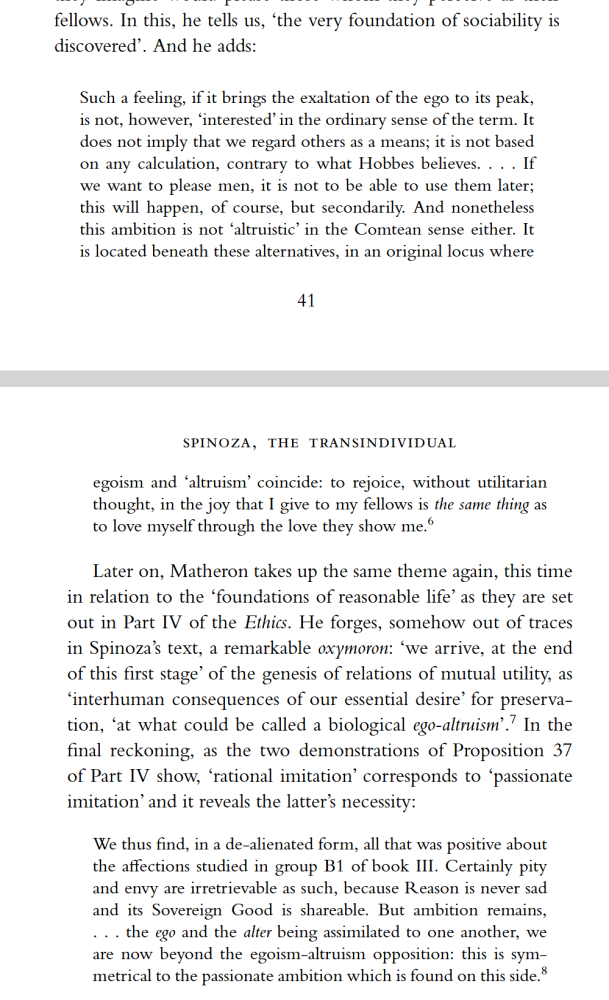All Activity
- Today
-
This basketball commentary can EASILY be a primary insight into what is wrong with a lot of Muay Thai, and what set out the great Golden Age fighters of Thailand, from today. Everyone is "technique" training, trying to crib, drill and copy in Muay Thai. In kaimuay culture the higher level capacities of fighters were made through play, and fighting.
- Yesterday
-
Exotic Cars Dubai joined the community
- Last week
-
Honestly, I'm watching Karuhat reconstruct his movement heritage as he is gaining more capacity in his ACL'd up knee (3 weeks now maybe), and sometime shadows just the gesture of his right kick, lancing forward on his left, recovering knee, and he laughs,, because he knows that this little movement, this little lance, is like nobody else in the world. It's incredible. This micro movement, not even healthy, and he's already expressing in himself something nobody else can reach. and...he's standing in my livingroom.
-
Safiralee joined the community
-
I remember - I've probably written it somewhere else - driving to Phetjeejaa's family gym, which was up a few lanes and a dirt road, when she was the best female Muay Thai fighter in the world, at only 13 years of age, something we did everyday so Sylvie could train with her. And to get there we motorbiked up Khao Talo road, a pretty active road, and would pass by a Taekwondo studio with a large plate glass window showing the training mat inside, where numerous kids around Phetjeejaa's age all glowed in their starched white Gis, Ha-ai-ing in their moves. And I thought to myself...we are driving to where the best female fighter in the world trains and all these kids, the parents of these kids, don't even know she's there...up the road. And even if they did, they wouldn't train with her at her gym, because Muay Thai is low class, its dirty, nothing like the promise of a clean white Gi. The story of Muay Thai cannot be told without this strong division of class.
-
Moho Golf joined the community
-
As Thailand's Muay Thai Turns Itself Toward the Westerner more and more, people are going to yearn for "authentic" Muay Thai This is one of the great ironic consequences of Thailand attempting to change its Muay Thai into a Western-oriented sport, not only changing the rules of its fights for them, and their presentation, but also changing the training, the very "form" of Muay Thai itself...this is going to increase the demand and desire for "authentic" Muay Thai. Yes, increasing numbers of people will be drawn to the made-for-me Muay Thai, because that's a wide-lane highway...but of those numbers a small subset is going to more intensely feel: Nope, that stuff is not for me. In this counterintuitive way, tourism and soft power which is radically altering Muay Thai, it also is creating a foreign desire for the very thing that is being altered and lost. The traveler, in the sense of the person who wants to get away from themselves, their culture, the things they already know, to find what is different than them, is going to be drawn to what hasn't been shaped for them. This is complicated though, because this is also linked to a romanticization, and exoticization sometimes which can be problematic, and because this then pushes the tourism (first as "adventure tourism") halo out further and further, eventually commodifying, altering more of what "isn't shaped for them". This is the great contradiction. There has to be interest and value in preserving what has been, but then if that interest is grown in the foreigner, this will lead to more alteration...especially if there is a power imbalance. So we walk a fine line in valuing that which is not-like-us. What is hopeful and interesting is that Thailand, and Siam before it, has spent centuries absorbing the shaping powers of foreign trade, even intense colonization, and its culture has developed great resistance to these constant interactions. It, and therefore Muay Thai itself, arguably has woven into itself the capacity to hold its character when when pressed. This is really what probably makes Thailand's Muay Thai so special, so unique in the world...the way it has survived as not only some kind of martial antecedent from centuries ago (under the influence of many international fighting influences), but also how it negotiated the full 100 years of "modernity" in the 20th century, including decades and decades in dialogue with Western Boxing (first from the British, then from America). The only really worrisome aspect of this latest colonization, if we can call it that, is that the imposing forces brought to Muay Thai through globalization are not those of a complex fighting art, developed through its own its own lineage in foreign lands. It's that mostly what is shaping Muay Thai now is a very pale version of itself, a Muay Thai that was imitated by the Japanese in the 1970s, in a new made up sport "Kickboxing", which bent back through Europe in the 1980s, and now is finding its way back to Thailand, fueled by Western and international interest. Thailand's Muay Thai is facing being shaped by a shadow of itself, an echo, a devolvment of skills and meaningfulness. On trusts though that it can absorb this and move on. some of the history of Japanese Kickboxing:
-
Wow, just watched an old Thai Fight replay of top tier female matchup that featured Kero's opponent in her last fight, someone she pretty much overwhelmed right away (with probably a 4 kg advantage). It was amazing to see the difference in performance on Thai Fight. Very skilled, very game, sharp. I came away realizing just how HARD it is to fight up. It changes everything. Sylvie takes 4 kg disadvantages all the time, and honestly overcomes them more often than not. What she does is so unappreciated, not only by others, but by Sylvie herself. Giving up significant weight and winning doesn't just take toughness, it takes an incredible amount of skill to keep that fighter away from what they want to do, to nullify all that size, strength and the angles. It's a complete art. You see this in female fighting all the time, big weight advantages REALLY matter.
-
Anisha Hull joined the community
-
Zohaib Jefferson joined the community
-
NannaMarie joined the community
- Earlier
-
I'm exploring two aspects of (seeming) spontaneous order (complexity) in Thailand's traditional Muay Thai. At the level of fights themselves there seem to have been a market dynamics in betting customs which drove diversity and escalating skill level, and within the traditional kaimuay there seems to have been an individuation process in training which also escalated skill level and diversity (or at least individualized expression), each of these with not a great deal of Top Down structuring, steering. I'm searching for the nexus between these two "self-organzing" dynamics, which may really be more complimentary, social systems.
-
Here is some private discussion traditional Muay Thai description which helped develop this parable of the Guitar. The challenge, from a philosphical sense, but also from an ethnographic sense, is to explain the diversity and sophistication of technique and style that arises in the Thai kaimuay, without much Top Down instruction. Here appealing to Simondon's theory of Individuation. But...in the Muay Thai (traditional) example, you actually are learning through a communal resonance with your peers, everyone else in the camp. Through a group memesis. It's not a direct relationship to the "music" per se, between you as an individual and an "experience" It's horizontal... how the person next to you is experiencing/expressing the music and relating to the authority and the work. I've compared it to syncing metronomes. youtu.be/Aaxw4zbULMs?... the communal form of the kaimuay (camp) brings together a communication of aesthetic, technical excellence, in which there is very little or NO top down direct control or shaping. young fighters sync up with the communal form, which actually also involves an incredible amount of diversity. Everyone kicking on a bag in a traditional setting has a DIFFERENT kick, because they haven't been "corrected" from the top down... But all the kicks in the gym have a kind of sync'd up quality, something that goes beyond a biomechanical consistency. There is a tremendous Virtual / Actual individuation dynamic that I think you would vibe on. This is what gives trad Muay Thai so much of its diversity. So much of its expression. It's because of its horizontal, communal learning through mimesis and a kind of perspective-ism If you go into a Western Muay Thai gym all the kicks on the bag, from all the students/fighters will be the SAME kick. With some doing it better or worse, with more "error" or less than others. In a trad Thai gym all the kicks are different. ...but, its hard to describe...because they all express some "inner" thing that holds them together. Maybe the same thing can be seen in other sports, like inner city basketball or favela football/soccer, things that have a kind of "organic" lineage. They hold together because they are a cultural form that is developed in horizontal context and comparisons with peers (not Top Down), but everyone has their own "game". It is very diverse. When people try to "export" knowledge from these, let's call them "organic", contexts, processes, not only are things "abstracted" (often biomechanically, traced into fixed patterns), but they are also exported with Top Down authority which channels and exacts "faithfullness" to some isolate quality. I think this is Deleuze's main issue with Platonism. The idea that there is a "form" and then "copies" which are more or less faithful. This, I'd argue, is actually something that prevails in "export" (outside of a developmental milieu), under conditions of abstraction (and perhaps exploitation). This is the "cut". 6:29 PM Here is a video where we slow motion filmed the kick of Karuhat, one of the greatest kickers in Thai history. We not only filmed him, but also Sylvie trying to learn through imitation. He is the only person who has this kick, in all its individuation. You cannot get this kick by just imitating it...(in person, Sylvie) or as a user practicing it from the video. It was developed in a virtuality of the kaimuay, by him. But, in documenting it...some (SOME!) aspects of it are transmitted forward. ...its a kick that is very different than many Western versions of the "Thai Kick" The keys to it are about a feeling, an affect array perhaps, and its uniqueness came out of the shared "metronome" of the traditional gym, the horizontal community of training, which also produced other kicks of the same "family of resemblance" (as Wittgenstein would say) Ultimately, its preservation is about returning to the instruction of a "feeling"...but also highlighting that the kick itself came out of a mutuality of feeling, and not a Top Down instruction. It's much closer to something like all the diversity of qualities of different pro surfers, who learned to surf not only one-to-one on individual waves, but in communities of surfers who would all go to one spot, and kind of cross-pollinate, compete in a mutuality (non-formally), steal and borrow from each other, a milieu. Not because there was some kind of Top Down authority of "how to surf" or "what exact techniques to use", or because there was an ideal "form" and a lot of error'd versions of it copying it. Almost everything that Sylvie produces is Sylvie learning through imitation and FAILING before the living example, because what we are actually documenting is not the Ideal vs the bad copy...but rather the actual, embodied, lived relationship that integrates oneself with another, converging in communication. She is "copying", but that's not really it. It's about syncing up, and the material/psychological relationship between two people, which smooths over the biomechanical "copy", and fills in some of the affects. But...this mutuality is really also artificial, because its one-to-one, and this isn't how Muay Thai technique is transmitted. It's developed in community. One-to-many. Many-to-one.
-
Balibar on Matheron, on Spinoza and Ego-altruism: Re-reading this essay, as well as many subsequent conversations involving Simondon's Pre-Individual Field (PI Field) theory of individuation, spurred me to write this Guitar parable explaining some of the developmental dynamics of the Muay Thai kaimuay today:
-
Kevin von Duuglas-Ittu started following A Guitar Parable of Muay Thai
-
Imagine there is a guitar school, where boys come to live at a pre-teen age, that has something of a feel of a family. None of them know how to play a guitar. They are given guitars and given very basic drills to practice each day. They may be taught how to basically hold the guitar, or hold strings, but there isn't much technical instruction. They can see from older boys who have been at the school how it is done, and there is a lot of imitation. The drilling is fatiguing. Everyone drills together, playing scales or basic chord series over and over, and everyone is doing it together. They can see each other, and even the most experienced players in the school are sitting with the most inexperienced. Some may struggle, they push through. There is a strong sense of obligation, and the dynamics of the group hold everything together. Sometimes this drilling is grueling. Experienced student players are so adept at the drills they can do them in a very lazy fashion, or they can do them with flair and personal small variation. Sometimes they can find themselves "competing" with others in the group, just in a sort of expressiveness, because the drills are so boring. The fatigue units everyone. Younger boys watch the older boys add small qualities to their drills. Aside from drilling like this, there battling. This is almost always quite playful...though there is always a dimension of dominance, of agonism. In pairs students "battle each other" in back and forth exchanges of aspects of music, much of it drawn from the skills in the drills, but the battles are musical, and expressive. Communally there develops an aesthetic where one knows if they are losing a battle at any point, mostly from watching the playful battles of older guitar students. The younger students battle in a rather simplistic way. There is a kind of metronome of music as everyone is battling at the same time. There is almost no "instruction" given in these battles, no correction. In the drills there may be some correction, but the correction is toward the intensity and focus given. Most of the correction comes organically from the group, and the lead examples of developed players. Because fatigue is involved in these sessions, playful guitar battles, which last in rounds everyone follows, may by quite lowkey. Students that know each other well may just used them to rest, in only a gentle back and forth, together "mock" battling. And then other playful battles may really escalate, because social hierarchy in the school, where everyone lives together, is always contested. Winning at any one time feels substantive. So, in these sessions of fatiguing drilling together (drills which develop personally expressiveness, and extraordinary endurance) and playful battles (which vary in intensity from sleepwalking imitative back and forth, to outright contests of superiority, and sometimes passing between the two intensities in alternation), make up the conditions for skill development, not only at the technical level, but also the level of styles. At a fairly young age the students of the school also participate in public guitar battles versus other guitar students of their own approximate skill...as do the more experienced students. Everyone attends these, and guitarists in these battles win money, some of it for themselves, some for the families they don't live with, some for the school. Gambling abounds in these public battles, so guitarists on stage can always tell if the battle is close, who is winning, from audience bets and their shouts and energies. The battles have a strong aesthetic shape, composed of 5 rounds. In the aesthetics of music, as the battle builds the most intense back and forths occur in rounds 3 and 4, when the music is really building. Wins and losses in these public battles raise or lower the social standing of the students when they go back to the home school. And the display of creative skills in play is fed back into their play battles and drilling back in school. Sometimes they are corrected, often they are urged to be more of a certain way, a way they would have won, but there is a cycling dynamic between the public battles, and the playful battles back in the school. Everyone in the school is watching everyone. Student learn from imitating the better, older, more developed students, but also from others that are their own peers. Because everyone of a certain age and experience is sharing the fatigue, and the struggle, how others your age are doing things affects and inspires you. The environment is incredibly mimetic. Identities and skills are developed in the context of others. The host of schools in a region, and their 100s of local public battles, collectively create the styles of the music of that region. Certain techniques or tempos fall out of favor, others rise, according to the gambling values. Much of this is shaped by the underlying culture, and the cumulative history of the music, generations of public battles, and even famous musicians that grew out of these battles. It is an agonistic aesthetics of music, full of styles and localized techniques that have developed in diversity, but it holds together as a single "music". If you hear this music being played, you recognize it right away.
-
Robbert Wilson joined the community
-
KaylaWells changed their profile photo
-
KaylaWells joined the community
-
It's interesting, I think (and to keep it short) the recent surge in MMA/Muay Thai fans has both got the sport thriving but also at the same time dare I say ruined the magic Muay Thai had. It's come leaps and bounds from the poor mans sport it was known as to the rare few outside thailand who knew about the sport.
-
Nokyai joined the community
-
4. Some kid who they didn't even have a proper photo for. He knew he was fighting on the day and he just pulls up as a big betting underdog who no one knows and won easily. His name is Petchyindee Sor. Roongaroon. His dad fought under Sia Nao's show, now his kid's under Sia Boat's show, that's why hid name is Petchyindee
-
A lot of these thoughts of several years came together for me in side conversation with Arm of Muay Thai Testament Instagram who is looking to perhaps put together a project around Muay Dek fighters of today. I asked him if he could link some present Muay Dek fighters on the rise. This is what he wrote, posted with permission, posted in a series of replies: Strong Muay Dek Fighters Today 1. I was rewatching one kid this morning, as I do with all the kid fights that gets good reception, and this kid from some gym I've never heard of is so good femue. I think the gym is a new addition to Petchyindee's roster now. His name is Kaona Jor. Nopparat The part about Femue being easier to execute at lower weight is so true. Regarding the examples, I only really know the Petchyindee ones but here goes. In no particular order: 1. I was rewatching one kid this morning, as I do with all the kid fights that gets good reception, and this kid from some gym I've never heard of is so good femue. I think the gym is a new addition to Petchyindee's roster now. His name is Kaona Jor. Nopparat
Footer title
This content can be configured within your theme settings in your ACP. You can add any HTML including images, paragraphs and lists.
Footer title
This content can be configured within your theme settings in your ACP. You can add any HTML including images, paragraphs and lists.
Footer title
This content can be configured within your theme settings in your ACP. You can add any HTML including images, paragraphs and lists.






